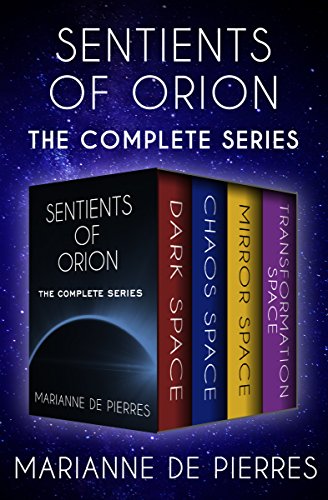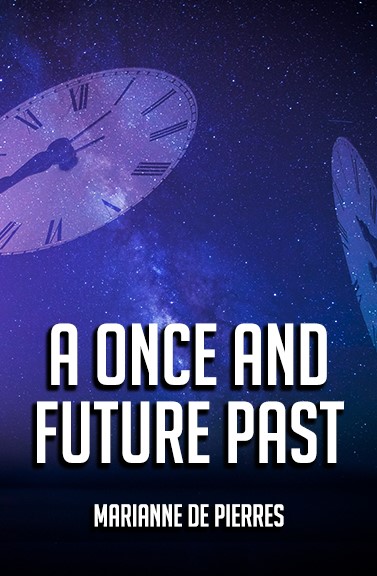Two readers walk into a bar. “Read any good books lately?” one reader asks the other.
Two authors walk into a bar. “Sold any good books lately?” one author asks the other.
Honest, that’s the truth. The problem is that the second question is a lot harder to answer than the first. Which is why when I’m asked to wax poetic about the state of the science fiction romance genre, I’ll look at my wristwatch and ask, “Do you mean the state of SFR now or a half-hour from now?”
Adult science fiction novels, according to my agent, Kristin Nelson, are on the down-trend. http://pubrants.blogspot.com/2010/09/when-its-not-hot-passion-can-carry-it.html “This week I went on submission with an adult SF novel. Ask any editor and they will tell you, adult SF is not hot. Fantasy is hot—particularly urban fantasy,” Nelson says.
This obviously is not happy news to anyone reading this blog. Nor is it startling news. Statistically, science fiction has always been a low point-scorer in the game of fiction, accounting for about 8 to 10 percent of all paperback sales. Mystery clocks in around 15 percent.
Which brings me to my title… a side order of romance.
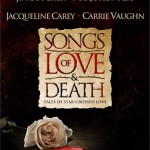 Romance fiction accounts for about 45 to 50 percent of all fiction paperbacks sold. This is a whopping huge number to those of us who follow the business of writing fiction (ie: the second set to walk into the bar above.) So one would think that combining a romance plot with a science fiction plot would bring that additional 10 percent of readers to the game.
Romance fiction accounts for about 45 to 50 percent of all fiction paperbacks sold. This is a whopping huge number to those of us who follow the business of writing fiction (ie: the second set to walk into the bar above.) So one would think that combining a romance plot with a science fiction plot would bring that additional 10 percent of readers to the game.
It hasn’t—yet. Or it hasn’t to any great extent. A lot of the reason is marketing. Publishers are sincerely confuzzled on how to market science fiction romance or romantic science fiction (and the two are not the same, no.) When publishers hype the romance with kissy-covers, the science fiction fans flee. When the publishers slap a starship on the cover, romance readers recoil. No, not all. I’m exaggerating to make a point (and to have fun with alliteration, obviously). But in the six years I’ve been on the shelves with SFR books, I’ve not seen the barriers come tumbling down from either side when it comes to a side order of romance with SF.
There have been high points. SF readers who like the character-driven visual media tend to be more accepting of SFR. Romance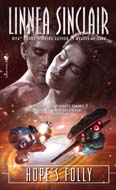 readers who watched FIREFLY and aimed to misbehave along with Captain Mal found the same kind of hi-jinx on the pages of an SFR. But there are still barriers—there are still readers (and bloggers and reviewers) who thrust their heels into the mud and refuse to budge on the issue of mixing SF with R.
readers who watched FIREFLY and aimed to misbehave along with Captain Mal found the same kind of hi-jinx on the pages of an SFR. But there are still barriers—there are still readers (and bloggers and reviewers) who thrust their heels into the mud and refuse to budge on the issue of mixing SF with R.
The reality is that a goodly amount of SF is plot-driven and/or theme-driven, with the characters simply as vehicles for the plot or analogies for the theme. If that’s the kind of journey a reader wants then, yes, any character-driven novel is going to feel strange to her. It doesn’t mean that plot is better than character, or character than plot. It’s what the reader likes or expects to find between the covers of the book.
And various publishing marketing departments haven’t had much success in telegraphing just what it is between the covers, so that readers can judge whether or not they like it. Which, of course, affects sales and, of course, affects an author’s “numbers,” which of course affects whether or not the author’s next manuscript will be picked up. Which affects the state of SFR as a genre overall.
Dorchester’s SHOMI line and Silhouette’s BOMBSHELL are almost poster-children for this dilemma. Both had SFR/Urban Fantasy/ Paranormal Romance plots. Both lines folded. Both were—in the opinions of just about every editor and agent and author I’ve spoken to in the past two years—horribly mis-marketed. And when a line goes down, detractors love to point to that and say, “See, I told you SFR doesn’t sell.”
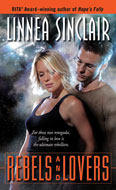 No. SFR poorly marketed doesn’t sell well. But with romance readers making up danged near half of all paperback sales, and with SF books traditionally having the longest shelf-life of any paperbacks in a store, there’s every indication the combo CAN and SHOULD work.
No. SFR poorly marketed doesn’t sell well. But with romance readers making up danged near half of all paperback sales, and with SF books traditionally having the longest shelf-life of any paperbacks in a store, there’s every indication the combo CAN and SHOULD work.
If only someone can figure out how to market it.
Maybe we need some guy in a trench coat standing in the bookstore aisles going, “Psst, hey, reader! You want a little side of romance with that?”
Bio:
A former news reporter and retired private detective, Linnea Sinclair writes award-winning, fast-paced science fiction romance for Bantam Dell, including Gabriel’s Ghost, Games of Command, Hope’s Folly, and her current best seller, Rebels and Lovers. Her short story, “Courting Trouble,” is featured in Songs of Love & Death: Tales of Star-Crossed Love, a cross-genre anthology edited by Gardner Dozois and George R.R. Martin (Simon & Schuster, Nov. 16. 2010). Sinclair splits her time between Florida (winters) and Ohio (summers)—and the Intergalactic Bar & Grille at www.linneasinclair.com.































